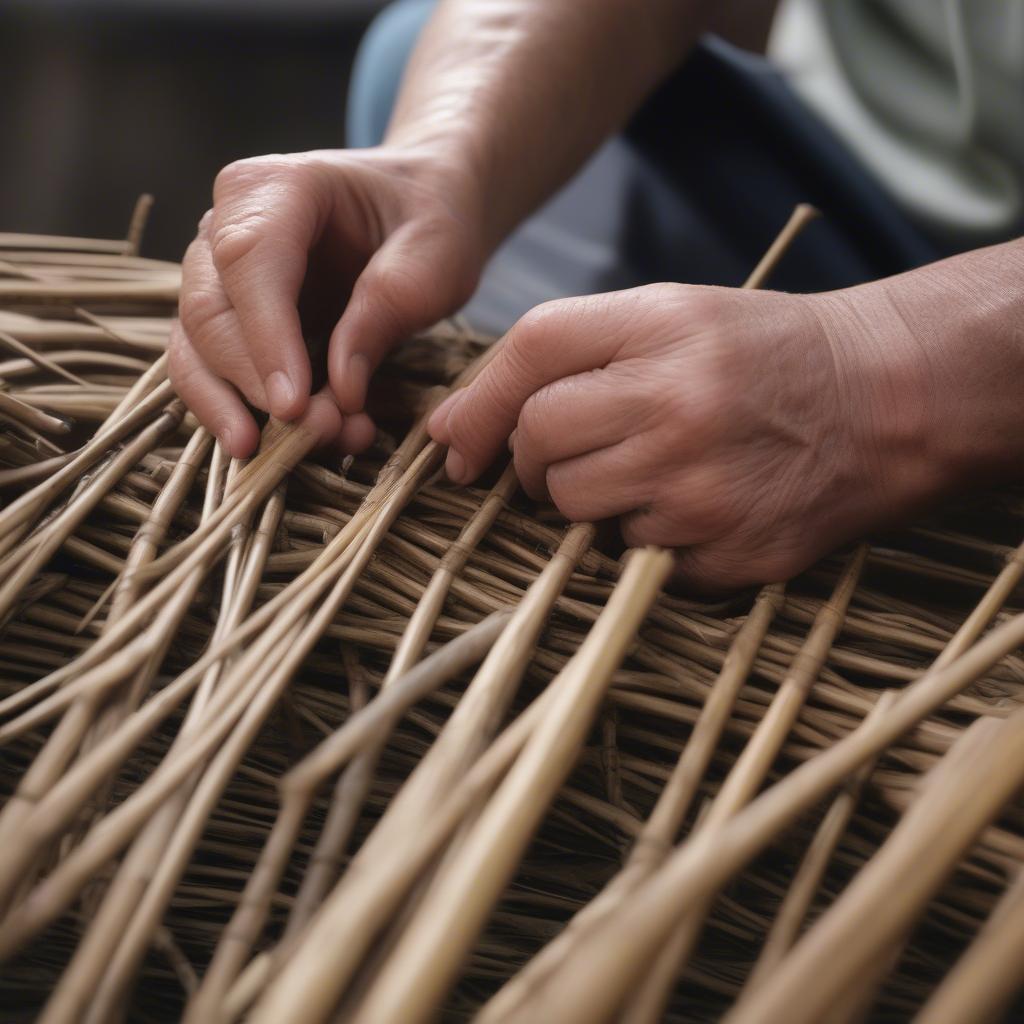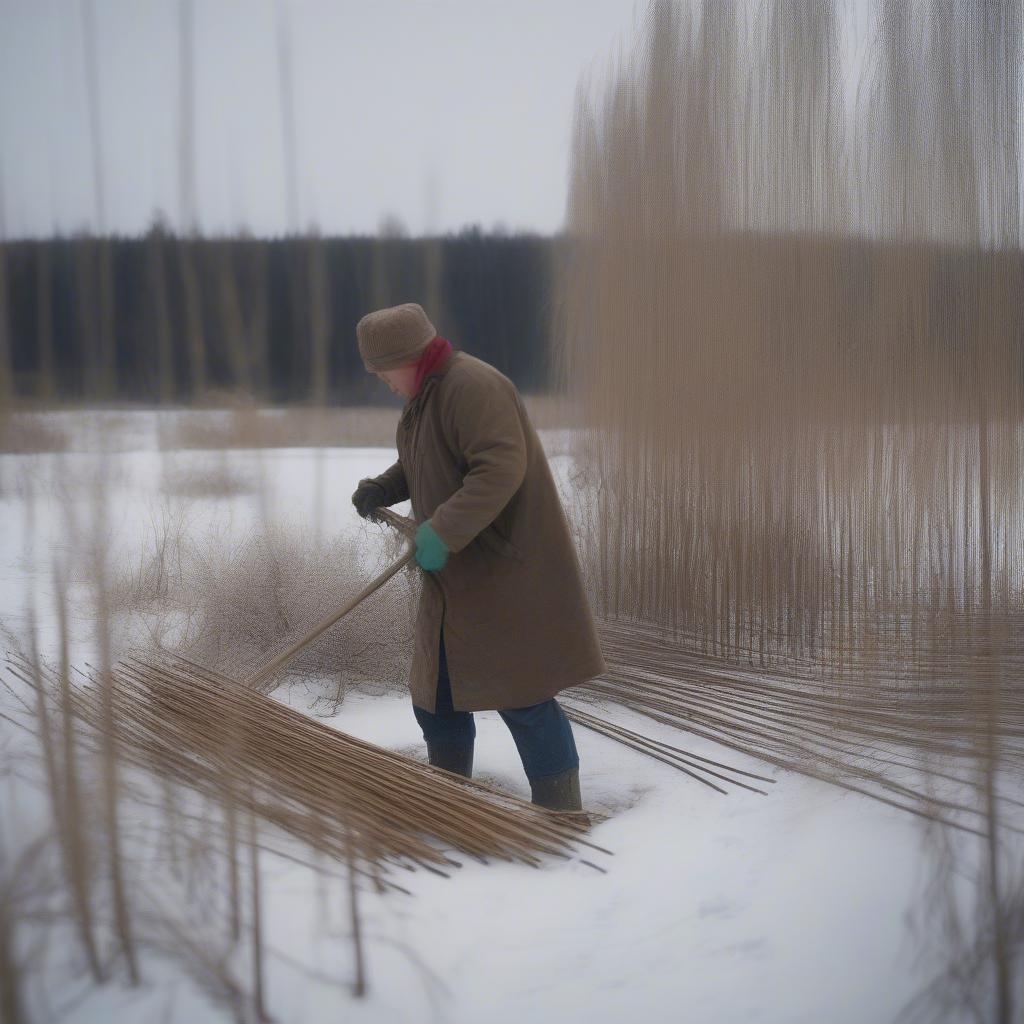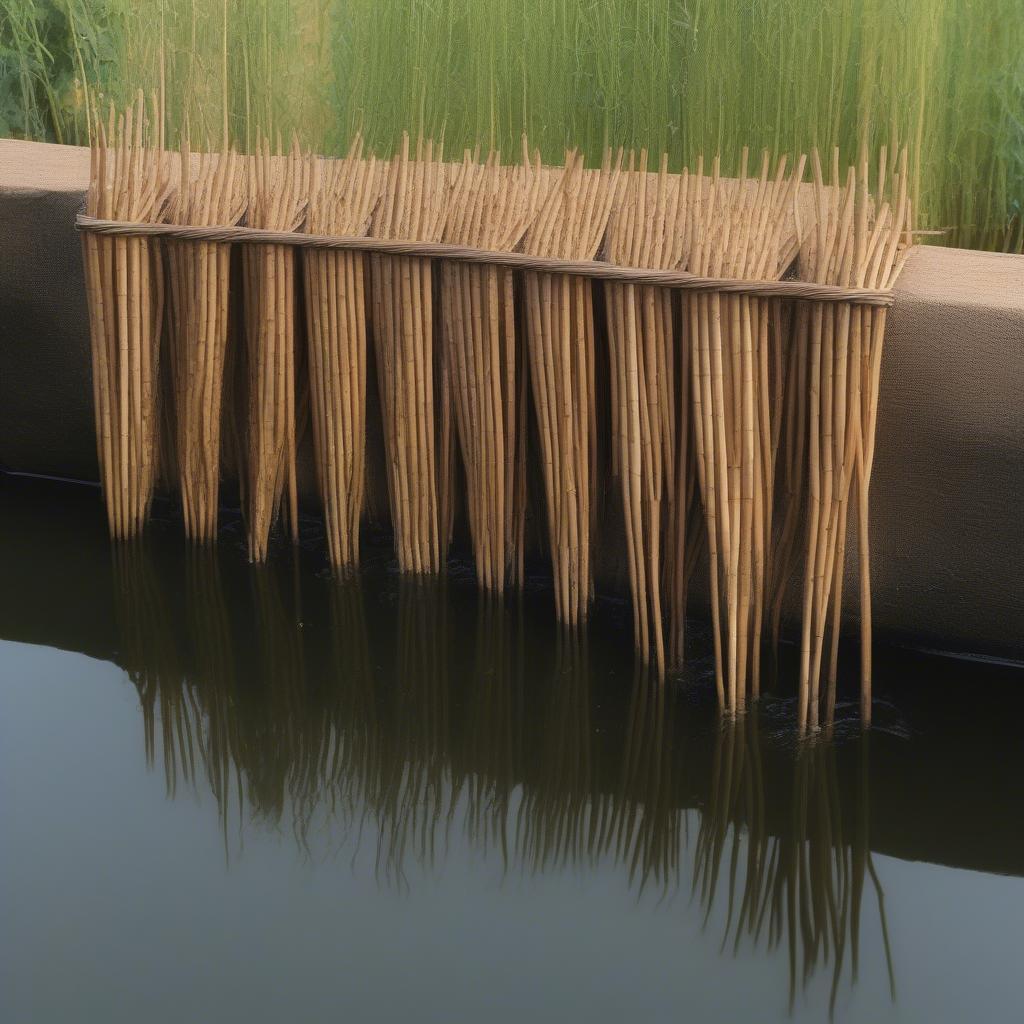Basket Weaving
How to Prepare Willow for Basket Weaving
Preparing willow for basket weaving is a crucial step that significantly impacts the final product’s quality and durability. Understanding how to properly select, harvest, and process willow will ensure your baskets are not only beautiful but also strong and long-lasting. Let’s delve into the essential steps for preparing willow for your next basket weaving project.
 Preparing Willow Rods for Basketry
Preparing Willow Rods for Basketry
Selecting and Harvesting Willow
Choosing the right willow variety is paramount. Different willow varieties offer varying degrees of flexibility and strength. Look for varieties known for their pliability and length, such as Salix viminalis or Salix triandra. These varieties are ideal for basket weaving due to their long, straight rods. Harvesting should ideally occur during the dormant season, typically between late autumn and early spring. This is when the sap is down, and the willow is less prone to damage. Cut the rods cleanly near the base, ensuring a smooth, even cut.
 Harvesting Willow Rods in Winter
Harvesting Willow Rods in Winter
For those new to the craft, consider joining basket weaving courses scotland to learn directly from experienced weavers. They can provide invaluable insights into identifying and harvesting willow. Proper harvesting techniques contribute to the health of the willow plant, ensuring its future growth and sustainability.
Processing Willow for Weaving
Once harvested, the willow needs to be processed before it can be used for weaving. The first step is sorting the rods by size and quality. This ensures uniformity in the final basket. After sorting, the willow rods need to be dried. This can be done by bundling the rods and leaving them in a well-ventilated area for several weeks or even months. Proper drying prevents mold and mildew growth and maintains the willow’s flexibility.
Soaking and Rehydrating Dried Willow
Before weaving, dried willow rods must be soaked to restore their flexibility. The soaking time depends on the thickness and dryness of the rods. A good rule of thumb is to soak them until they are pliable enough to bend without breaking. Soaking also helps to remove any remaining dirt or debris.
“Proper soaking is key,” says expert basket weaver, Sarah Miller. “Over-soaking can make the willow brittle, while under-soaking makes it difficult to work with.”
Techniques for Preparing Willow for Specific Basket Weaving Styles
Different basket weaving styles may require specific preparation methods. For example, finer baskets may require thinner, more pliable willow rods, while sturdier baskets may benefit from thicker, more robust rods. Learning about various techniques in basket weaving can enhance your understanding of willow preparation. Exploring different methods allows weavers to experiment with texture and design, creating unique and beautiful baskets.
 Soaking Willow Rods for Weaving
Soaking Willow Rods for Weaving
“Experimenting with different willow varieties and preparation methods can open up a world of creative possibilities,” advises renowned basketry artist, John Davis.
If you’re located in Florida and seeking hands-on instruction, consider basket weaving classes florida. These classes offer a valuable opportunity to learn directly from experts and refine your willow preparation skills.
Conclusion
How To Prepare Willow For Basket Weaving is a multifaceted process that requires attention to detail and patience. By understanding the intricacies of selecting, harvesting, and processing willow, you can create durable and beautiful baskets that will last for years to come. Mastering these techniques allows you to fully appreciate the art of basket weaving and connect with a centuries-old tradition. Remember the importance of proper soaking and explore different methods for preparing willow to discover a world of creative possibilities in basket weaving.
FAQ
- What is the best time of year to harvest willow? Late autumn to early spring is the ideal time.
- How long should willow be soaked before weaving? Soak until pliable, which varies depending on the willow’s thickness and dryness.
- What are some common willow varieties used in basket weaving? Salix viminalis and Salix triandra are popular choices.
- Why is it important to dry willow before soaking? Drying prevents mold and mildew and preserves the willow’s flexibility.
- Where can I learn more about basket weaving techniques? Consider looking into courses such as basket weaving courses glasgow or beisefuerth basket weaving for specialized knowledge.
Need assistance? Contact our 24/7 customer service at +84 388 951 999 or visit us in Hanoi, Vietnam or Tech Avenue, Suite 12, San Francisco, CA 94105, USA.
